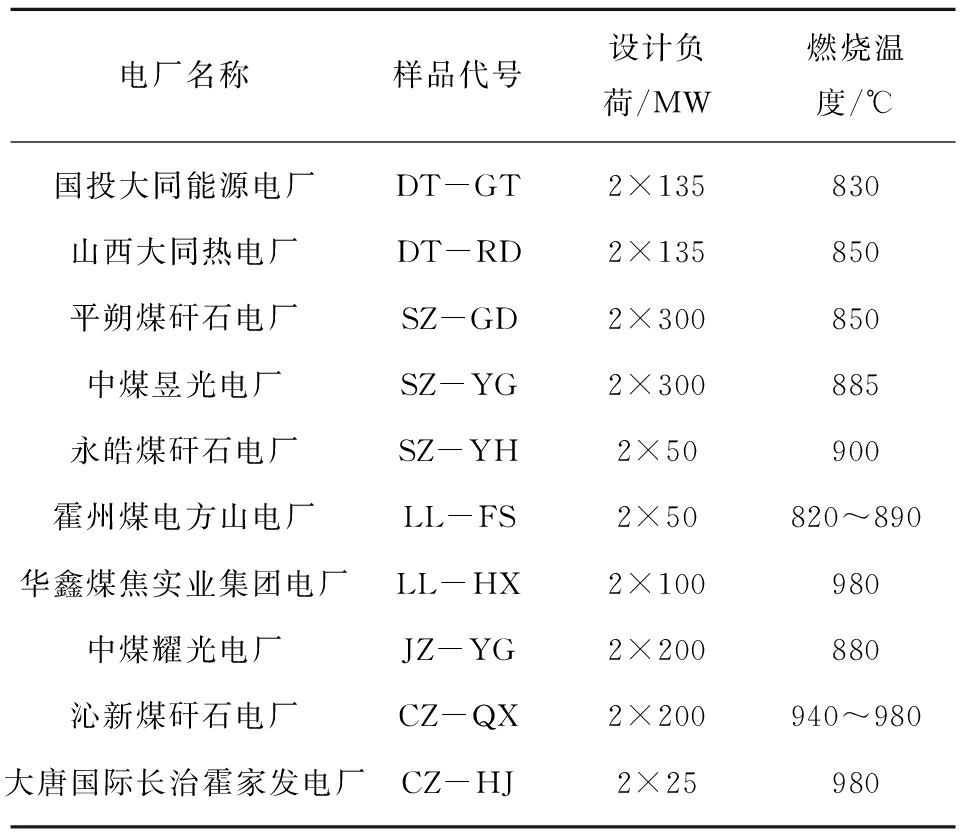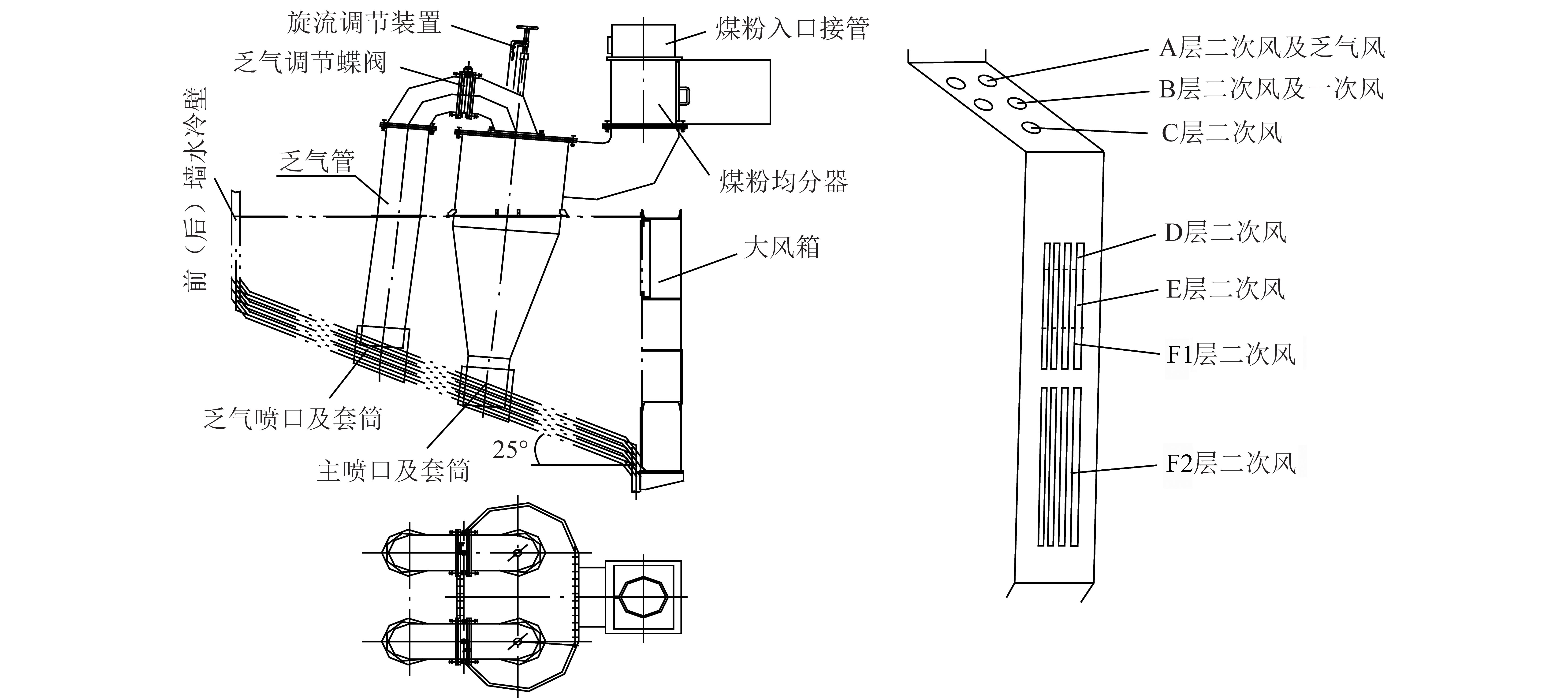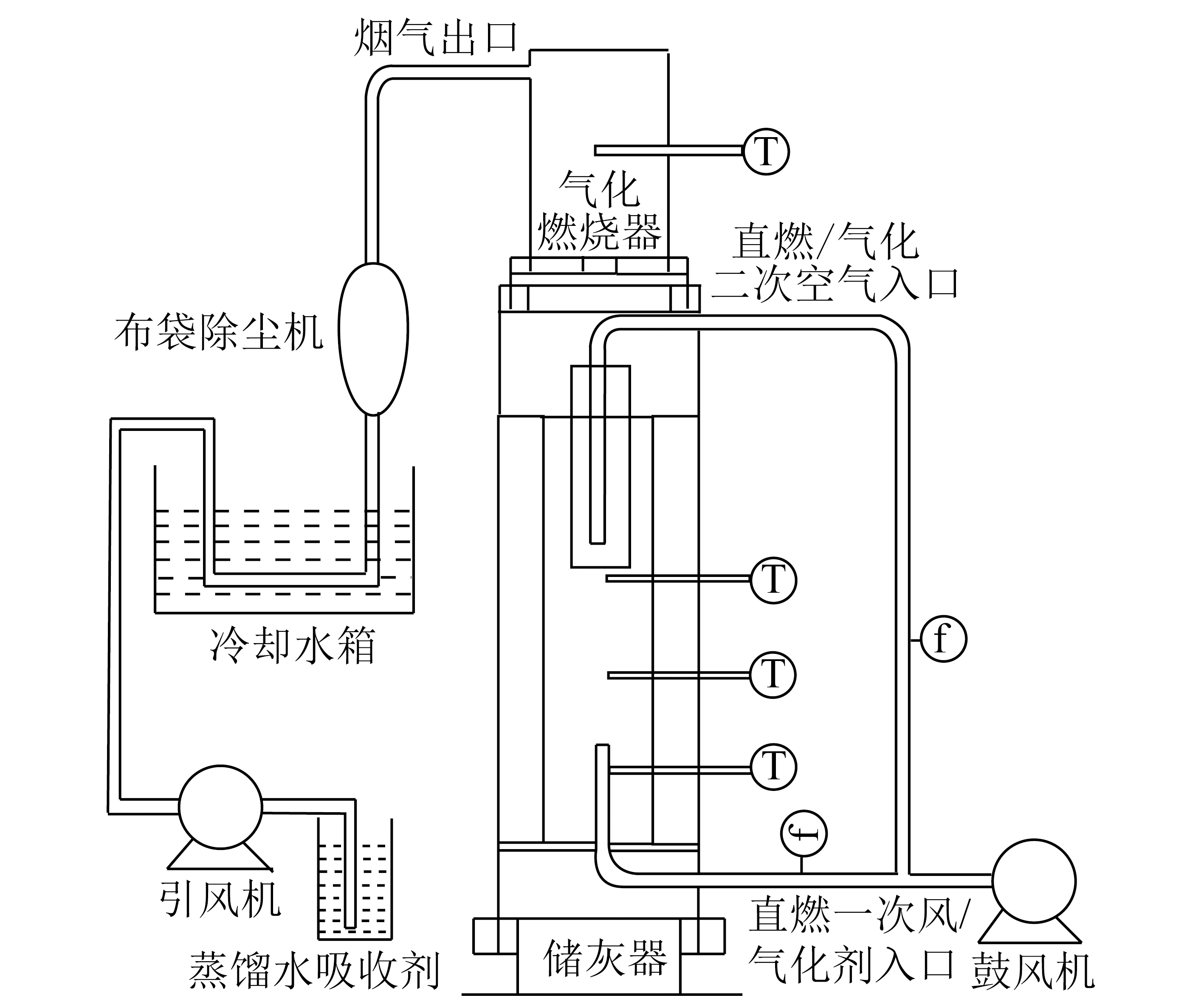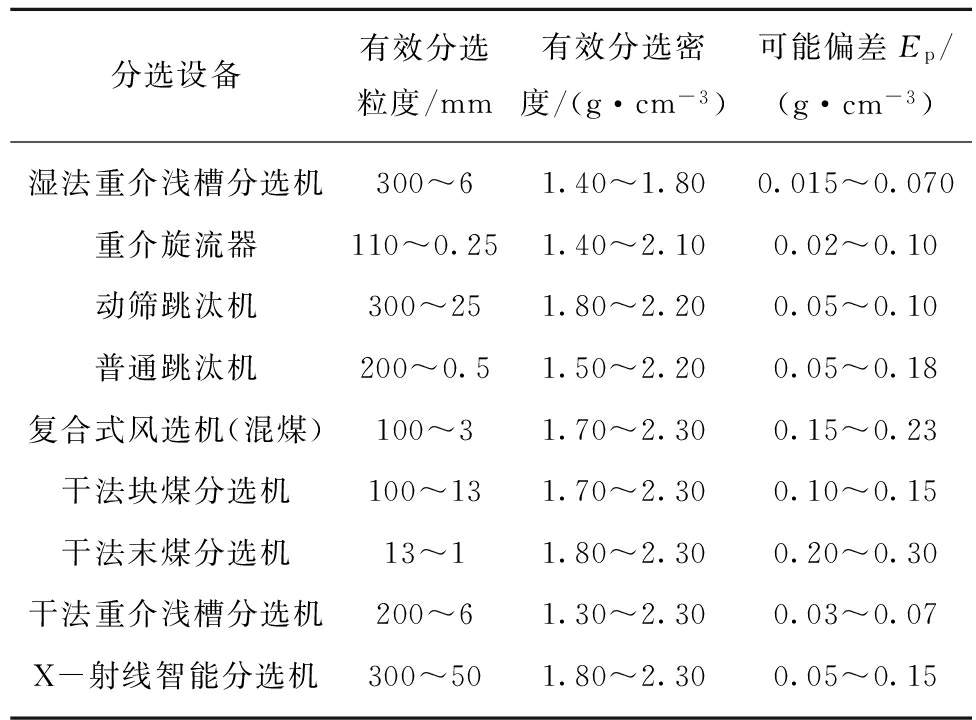“可再生能源-燃煤低碳互补发电及综合利用”专题
可再生能源与燃煤发电集成互补系统综述

Review on integration of renewable energy and coal-fired power generation
0 引 言
随着我国碳达峰、碳中和战略的提出和坚定执行,太阳能、风能等可再生能源得到长足发展[1],为我国能源结构的低碳化转型提供了支撑。但受限于我国资源禀赋特征和可再生能源发展现状,燃煤发电仍将是我国电力供应不可或缺的部分,作为主体性电源发挥兜底保障作用。
太阳能、风能等可再生能源目前仍存在不稳定、不连续及成本较高等瓶颈[2];而燃煤火力发电在灵活性改造、绿色低碳化升级等方面面临挑战[3]。太阳能光热及生物质等可与燃煤发电在同一系统内直接集成,共同驱动蒸汽朗肯循环对外供电[4-5];光伏、风电等清洁能源利用形式可与燃煤发电在运行中互补,共同提供稳定低碳电力[6-7]。可再生能源与燃煤发电互补集成在技术上具备可行性,可发挥可再生能源和燃煤发电优势,规避局限,实现互补。此外,我国中西部地区可再生能源和煤炭储量比较丰富,燃煤发电和可再生能源利用在地域分布上吻合度较好。
考虑燃煤发电与可再生能源互补利用的广阔前景,众多学者对其进行深入探索。笔者针对近年来可再生能源与燃煤发电互补系统相关研究进展进行梳理。首先介绍了可再生能源与燃煤发电直接集成的结构形式;其次介绍了可再生能源与燃煤发电系统的协同运行调控研究;之后总结了互补集成系统的分析评价方法;最后对可再生能源与燃煤发电互补系统的发展进行展望,以期为后续可再生能源与燃煤发电互补系统相关研究提供参考和借鉴。
1 可再生能源-燃煤发电系统直接集成
各类可再生能源中,风电、光伏直接产生电力,难与燃煤发电在同一系统内直接集成。但太阳能光热和生物质则可与燃煤发电直接耦合,利用同一套汽机共同对外供电。
1.1 基于太阳能光热的集成形式
太阳能光热与燃煤发电互补集成主要是利用聚光太阳能量部分满足原燃煤发电某个部件(如回热加热器、再热器等)的加热功能,从而达到减少燃煤投入或增加系统出功的目的[8]。当前主流的太阳能聚光光热形式主要包括槽式、塔式、碟式及线性菲涅尔式,相应的聚光集热温度接近1 000 ℃[9]。太阳能光热与燃煤发电潜在集成形式如图1所示,理论上聚光太阳能光热可替代燃煤发电任一部件,实现互补集成。早在1975年,ZOSCHAK等[10]提出了太阳能光热与燃煤互补集成的系统构思,并基于某800 MW燃煤电站初步分析了太阳能替代回热器、过热器、再热器的热力性能。后续相关研究主要集中于槽式太阳能和塔式太阳能与燃煤电站的互补集成。

图1 太阳能光热与燃煤发电潜在集成形式
Fig.1 Potential integrated forms of solar photothermal and coal-fired power generation
槽式太阳能一般聚光集热温度不高于400 ℃[11],多用于部分替代燃煤电站的回热抽汽或省煤器等部件。HU等[12]提出了槽式太阳能替代回热抽汽加热锅炉给水,节省的抽汽于汽轮机内继续膨胀做功,进而实现系统功率增发的互补方案。YANG等[13]比较了槽式太阳能替代第一级高压回热抽汽、替代第二级高压回热抽汽、替代全部低压回热抽汽及替代最末级抽汽4种不同槽式太阳能替代回热抽汽的互补方案。结果表明,替代参数最高的第一级高压回热抽汽具有最高的太阳能发电效率和最佳的燃煤节省效果。POPOV[14]基于某130 MW燃煤电站,分析了槽式太阳能替代部分省煤器 高压回热抽汽方案,并与其他方案对比,结果表明,替代部分省煤器 高压回热抽汽方案可将太阳能贡献的发电份额提升至25%。
塔式聚光集热的聚光集热温度较高,可用于替代燃煤电站的过热及再热器。ZHANG等[15]基于某660 MW燃煤电站,研究了塔式太阳能替代燃煤发电过热器的互补形式,结果表明该形式下的太阳能发电效率较单一塔式热发电提升了6.1%。ZHU等[16]针对塔式太阳能部分替代再热器的互补形式开展了![]() 分析,并指出该形式性能进一步提升的突破口。
分析,并指出该形式性能进一步提升的突破口。
燃煤发电碳排放巨大,捕集烟气CO2消耗热能较多。对此,相关学者提出了利用太阳能光热直接驱动燃煤发电烟气碳捕集过程的耦合形式[17-19]。基于此,邢晨健等[20-21]提出了聚光光伏发电、光伏余热满足燃煤发电烟气碳捕集能量需求的耦合形式。该方式在充分利用太阳能光伏产电的基础上,进一步避免了燃煤发电自身供能碳捕集面临的性能衰减,实现了燃煤高效发电、零碳排放及可再生能源的高效利用。
1.2 生物质与燃煤发电集成形式
生物质资源总量巨大,不存在风能、太阳能等资源不稳定、不连续的限制。在政策激励下,我国生物质发电装机量逐年增加,目前已达3 798万kW[22]。但生物质单一发电燃料成本较高,生物质与燃煤耦合发电成为重点发展方向[23]。
生物质与燃煤发电耦合形式如图2所示。生物质与燃煤耦合发电的方式主要包括[24]:① 利用气化炉气化生物质后,将可燃气体送入燃煤锅炉后为燃煤发电供能;② 处理后的生物质燃料与燃煤混合燃烧,为燃煤发电的蒸汽朗肯循环供能;③ 利用生物质燃料锅炉和燃煤锅炉分别生产蒸汽用于驱动蒸汽轮机发电的并联耦合。

图2 生物质与燃煤发电耦合形式
Fig.2 Coupling form of biomass and coal-fired power generation
生物质气化后与燃煤耦合利用在国内外得到较广泛应用,芬兰VASKILUOTO[25]、奥地利ZELTWEG[26]及我国大唐长山[27]、国电长源[5]等项目运行经验表明生物质气化与燃煤耦合利用可有效节省燃煤投入,减少CO2排放,对燃煤锅炉负面影响较小,可实现高效发电。但从燃煤电站改造角度分析,初投资成本和维护费用较高[28]。生物质直接与燃煤耦合掺烧初投资成本在3种形式中最低,也获得了广泛推广[29]。但不同类型生物质燃料对燃煤锅炉燃烧影响不同(如农林类生物质可降低燃点[30],污泥类生物质灰含量高,影响燃烧性能等[24])。同时,生物质中富含的K、Ca等无机元素也加剧了锅炉换热面结渣问题[31]。并联耦合形式较前2种形式具有燃料适应性好、生物质耦合比例高、有利于灰渣分级回收利用等优势[32]。但受限于较低的热力参数,系统发电效率相对较低(约2%[33]),同时全套焚烧炉设备导致投资成本较高,降低系统经济性[32]。
2 系统运行调控
可再生能源与燃煤发电互补集成的运行调控包括2方面:直接集成系统在实际运行中的变工况运行调控策略及方法研究;风电、光伏与燃煤发电相互协同互补运行的调控策略。
2.1 直接集成系统运行调控
针对太阳能光热与燃煤发电集成系统动态运行调控,相关学者研究了太阳辐照瞬态变化对系统的动态影响特性。阎秦[34]基于200 MW燃煤发电系统和抛物槽式集热器的动态模型,研究了辐照调节变动对光煤互补系统运行性能的影响。侯宏娟等[35]基于Trnsys平台构建了太阳能光热燃煤互补发电系统动态模型,得出了全年不同季节气象条件下系统的运行特性,并分析了辐照瞬态波动对系统的影响规律和相应的调节方法。LI等[36]和黄畅[37]研究了辐照剧烈变动对光煤互补系统动态运行的安全性影响。WU等[38-39]相继提出并开展了光煤互补系统集成储能装置研究,结果表明互补系统的动态运行性能和稳定性明显提升。WANG等[40]将槽式集热器的聚光跟踪主动调控应用于光煤互补系统中。在无储能装置调节下,避免了辐照波动对光煤互补系统动态运行的负面影响。ZHANG等[41-42]基于构建的动态模型,提出了光煤互补系统聚光集热场的启停运行策略,实现系统综合性能提升。
针对生物质与燃煤发电的集成系统运行,相关研究多聚焦引入生物质对锅炉燃烧性能的影响及改进。生物质与燃煤发电的气化耦合形式可降低CO2、SOx及NOx排放,有利于燃煤发电系统清洁排放,同时对原燃煤发电锅炉的腐蚀、结渣及其他系统影响较小[43-44]。但相关运行研究发现生物质燃气投入比例越高,锅炉烟气量越多,炉膛温度随之降低,锅炉热效率和能量效率也降低[45-47]。对此,柯辉[25]提出正压状态运行的生物质气化耦合燃煤发电模式,避免中高温增压发风机投入,进一步提升系统安全性和经济性。生物质与燃煤发电直接耦合掺烧会对燃煤锅炉安全运行、清洁排放及热效率产生影响。韩伟哲等[48]研究表明,生物质与燃煤直接混燃对SOx有一定减排效果。但许洁等[49]研究表明,秸秆等农林废弃物中较多K、Na等无机盐熔点较低,易造成受热面结渣、腐蚀等问题。此外,添加铝基[50]、钙基[51]及磷基添加剂[52]可有效减少生物质直燃面临的结渣问题。污泥、生活垃圾等生物质则可能含有较多Cl和F等腐蚀性元素,引发机组引风机叶片等部位腐蚀[53]。相关研究指出,大比例掺烧生物质时,引风机需进行扩容改造满足需求,受热面腐蚀、脱硝、除尘和脱硫系统应进行相应处理以保障正常运行[54]。在具体措施方面,张楠等[55-56]提出采用富硅酸盐物质和耐腐蚀涂层以减少生物质直接混燃腐蚀的影响。在生物质与燃煤耦合,提升系统运行性能方面,王一坤等[57]分析了生物质气化耦合发电对提升灵活性的技术可行性,并提出了燃烧器等部件适应灵活性改造策略。
2.2 多能互补协同运行策略
在能源结构转型及双碳背景下,光伏、风电在我国电力供应中占比逐渐提升。构建燃煤发电、风电及光伏在内的多能互补供电系统有利于发挥不同类型电源的各自优势,通过相互协调实现稳定、清洁、高效的电力供给。
光伏、风电与燃煤电站协同运行,首先需解决光伏、风电不稳定、不连续的随机性波动对系统安全稳定运行的冲击。姚磊[58]针对光伏、燃煤打捆外送出现的次同步振荡问题,提出在光伏电站上配置模糊自抗扰附加阻尼控制器的调整方法,并通过时域仿真验证了方案的有效性。忽浩然等[7]以安徽六安电网运行调度为例,介绍了大规模光伏并网与火电打捆外送中面临的稳定性和安全性挑战,并提出通过稳控系统配置、通道组织及控制策略调整,实现了系统大规模消纳随机性可再生能源。除稳定运行外,光伏、风电与燃煤发电协同运行调控多以外送风光最大化消纳[59]、综合总成本最优[6]等为目标进行项目规划设计和运行调度。刘兴华等[60]考虑了光伏发电的不确定性,综合考虑经济成本和污染物排放,构建综合指标对火电-光伏发电的经济调度进行研究。檀勤良等[61]考虑企业购电成本、可再生能源发电量最大及可再生能源出力波动等因素,构建综合指标,提出了风光火联合外送优化调度策略,并应用于天中直流输电工程。李强等[62]提出了太阳能热发电参与的风光火2阶段调度策略,利用火电和光热电站在2阶段的灵活调控,实现了1阶段风电、光伏的最大化消纳。
3 系统分析评价
对于太阳能光热与燃煤发电的互补集成,常从系统热力性能入手进行分析评价,HU等[12]研究表明,与燃煤发电机组相比,光煤互补系统由于加入太阳能光热能量,机组整体效率明显提升;与纯光热发电相比,系统内太阳能发电效率更高。WANG等[63]构建统一理论模型,对比了不同聚光形式(槽式、塔式)与燃煤发电不同部件集成效果。结果表明,槽式太阳能替代最末级高加回热加热器性能最佳。PENG等[64-65]对某典型光煤互补系统开展全工况EUD(Energy Utilization Diagram)图像![]() 分析,结果表明系统内光热利用过程
分析,结果表明系统内光热利用过程![]() 损低于纯光热发电过程,揭示了光煤互补系统效率优于光热发电系统的主要原因。除热力性能外,研究者还考虑度电成本[66]、收益率[67]、初投资[68-69]、碳税[40]等经济性指标,对系统进行综合性评价并提出相应的改进方法。太阳能与燃煤发电耦合系统的发电量均来自汽轮机,其中太阳能贡献度的确定是研究重点。常用的计算方法有:① 依据太阳能和燃煤各自输入系统的热量进行分配的热量分配法[70];② 基于理想过程,考虑输入/输出
损低于纯光热发电过程,揭示了光煤互补系统效率优于光热发电系统的主要原因。除热力性能外,研究者还考虑度电成本[66]、收益率[67]、初投资[68-69]、碳税[40]等经济性指标,对系统进行综合性评价并提出相应的改进方法。太阳能与燃煤发电耦合系统的发电量均来自汽轮机,其中太阳能贡献度的确定是研究重点。常用的计算方法有:① 依据太阳能和燃煤各自输入系统的热量进行分配的热量分配法[70];② 基于理想过程,考虑输入/输出![]() 的差别,构建基于解析解的太阳能贡献度评价模型[71];③ 综合考虑热力性能和经济性的热经济成本法[72]。
的差别,构建基于解析解的太阳能贡献度评价模型[71];③ 综合考虑热力性能和经济性的热经济成本法[72]。
生物质与燃煤发电耦合研究多关注其对锅炉燃烧性能及安全性的影响[32,57]。吴智泉等[73]针对生物质与燃煤发电气化耦合进行第一定律和第二定律性能分析。结果表明,与生物质直燃发电相比,气化耦合方式的热效率在各工况下性能优势明显。此外,研究者研究了生物质耦合燃煤发电对系统经济性的影响。云慧敏等[74]对生物质与燃煤发电耦合进行了综合经济环境效益评估。结果表明,生物质与燃煤发电直燃混合的发电成本低于燃煤发电,且随碳交易、碳税等机制引入,潜在利润率可能更高。BASU等[75]采用全生命周期分析,对生物质与燃煤发电直接耦合及气化耦合2种方式进行了环境和经济性分析,结果表明气化耦合方式发电成本较高,但碳减排潜力更大。于博[76]对生物质与燃煤发电气化耦合项目的潜在效益进行分析,详细梳理了潜在的政策风险、燃料风险、运营风险。生物质和燃煤适用的产业政策、燃料价格及潜在投资方可能存在区别。因此生物质与燃煤发电耦合系统中,生物质和燃煤发电量计算是后续划分的重要依据。刘启军等[77]提出了根据输入热量占比计算各自发电量的方法。孟庆慧等[78]提出了适用于生物质直接混燃的14C同位素在线检测法,用于计算直接混燃模式下的生物质发电量。井新经等[79]梳理了适用于直接耦合、间接耦合及并联耦合3种模式下的生物质发电量计算方法,为后续生物质燃煤发电耦合项目提供了工程借鉴。
针对风电、光伏与燃煤发电的协调运行,除配置方案和运行协调策略研究外,还对协调运行过程中的分析评价方法进行研究,具体包括稳定性、灵活性调度及社会综合经济效益的评价等。吴萍等[80]提出了一套适用于风光火发电打捆外送的稳定性评价方法,为相关方案选择及具体运行评估提供参考。王嘉梁[81]针对灵活性难以量化的问题,依据不同类型电源运行特性,基于盲数理论构建了火电、风电及光伏的灵活性量化模型,为风电光伏与燃煤发电协同运行提供参考数据。徐全义[82]基于国电康平风火联合运行的运行数据,对风电、火电打捆联合运行进行经济性评价。结果表明由于联合发电减少了风电弃风现象,联合运行经济收益和环境效益明显。邱锋凯[83]基于风电光伏和燃煤发电联合运行的规划、并网和运行全过程,构建了可再生能源有限调度的多层评价指标体系。房芳[84]构建了基于绿色经济的风火电联合运行综合效益评价方法,并基于某省运行数据对评价方法进行了研究,提出了提升综合效益的方法建议。
4 结语与展望
1)对于太阳能光热与燃煤发电的耦合系统,当前集成耦合形式研究比较充分。但动态调控运行研究多集中在气象条件变动对燃煤发电运行参数的影响规律和相应调节方法层面,后续应致力于充分挖掘太阳能光热侧和燃煤侧各自调峰能力,研究可以实现系统深度调峰和更具灵活性的运行调控策略。
2)生物质与燃煤耦合发电已获得一定范围的工程应用,从实际运行角度,应进一步研究减缓生物质混燃带来的结渣、腐蚀及高比例掺烧时锅炉效率降低的问题;在生物质与燃煤耦合发电推广方面,应进一步解决耦合系统中生物质发电准确计量等评价问题及生物质储运成本较高问题,从而更好地获得政策支持并提升经济性。
3)光伏、风电与燃煤发电的协调运行得到广泛关注,并在中西部省份有所应用。当前研究集中于容量优化配置、系统暂态稳定性分析、灵活调度及控制策略等方面。后续应进一步开展风光火项目内部责任分担和利益分配机制研究,从而实现不同类型电源间的互利共济和持续发展。
[1] 国家发展改革委员会. 十四五”现代能源体系规划 [EB/OL].(2022-01-29)[2022-10-01].https://www.ndrc.gov.cn/xxgk/zcfb/ghwb/202203/t20220322_1320016_ext.html.
[2] REN21.Renewables global status report[R].Paris:Renewable Energy Policy Network for the 21st Century, 2020.
[3] 国家能源局. 能源碳达峰碳中和标准化提升行动计划[EB/OL].(2022-09-20)[2022-10-01].https://www.nea.gov.cn/202210/09/c_1310668927.html.
[4] 李斌, 李岩, 张玉斌, 等.塔式太阳能辅助燃煤发电系统设计与运行特性仿真研究[J].中国电机工程学报, 2018, 38(6): 1729-1737,1909.
LI Bin, LI Yan,ZHANG Yubin ,et al. Simulation research on operating behavior of solar tower power aided coal-fired power generation system [J].Proceedings of the CSEE, 2018, 38(6): 1729-1737,1909.
[5] 毛健雄,郭慧娜,吴玉新.中国煤电低碳转型之路:国外生物质发电政策/技术综述及启示 [J]. 洁净煤技术, 2022, 28(3): 1-11.
MAO Jianxiong, GUO Huina, WU Yuxin. Road to low-carbon transformation of coal power in China:A review of biomass cofiring policies and technologies for coal power abroad and its inspiration on biomass utilization [J].Clean Coal Technology, 2022, 28(3): 1-11.
[6] 周保中, 刘敦楠, 张继广, 等. “风光火一体化”多能互补项目优化配置研究[J]. 发电技术, 2022, 43(1): 10-18.
ZHOU Baozhong, LIU Dunnan, ZHANG Jiguang, et al. Research on optimal allocation of multi-energy complementary project of wind-solar-thermal integration[J]. Power Generation Technol-ogy,2022, 43(1): 10-18.
[7] 忽浩然, 刘天翼, 李雪明. 大规模光伏打捆火电外送工程稳控系统的研究与应用[J]. 电工技术, 2017(10): 147-150.
HU Haoran,LIU Tianyi, LIU Xueming. Research and application of stability control system for large scale photovoltaic bundling thermal power transmission project[J]. Electric Engineering, 2017(10): 147-150.
[8] 王瑞林, 孙杰. 基于品位耦合的光煤互补发电系统集成理论分析[J]. 科学通报, 2017, 62(22): 2564-2576.
WANG Ruilin, SUN Jie, Theoretical analysis of integration of solar-coal hybrid power generation system based on energy level coupling[J]. Chinese Science Bulletin, 2017, 62(22):2564-2576.
[9] LI J. Scaling up concentrating solar thermal technology in China[J]. Renewable & Sustainable Energy Reviews, 2009, 13(8): 2051-2060.
[10] ZOSCHAK R J, WU S F. Studies of the direct input of solar energy to a fossil-fueled central station steam power plant [J]. Solar Energy, 1975, 17(5): 297-305.
[11] ISLAM M T, HUDA N, ABDULLAH A B, et al. A comprehensive review of state-of-the-art concentrating solar power (CSP) technologies:Current status and research trends[J]. Renewable &Sustainable Energy Reviews, 2018, 91: 987-1018.
[12] HU E, YANG Y P, NISHIMURA A, et al. Solar thermal aided power generation[J]. Applied Energy, 2010, 87(9): 2881-2885.
[13] YANG Y, YAN Q, ZHAI R, et al. An efficient way to use medium-or-low temperature solar heat for power generation - integration into conventional power plant[J]. Applied Thermal Engineering, 2011, 31(2/3): 157-162.
[14] POPOV D. An option for solar thermal repowering of fossil fuel fired power plants[J]. Solar Energy, 2011, 85(2): 344-349.
[15] ZHANG M, DU X, PANG L, et al. Performance of double source boiler with coal-fired and solar power tower heat for supercritical power generating unit[J]. Energy, 2016, 104: 64-75.
[16] ZHU Y, ZHAI R, PENG H, et al. Exergy destruction analysis of solar tower aided coal-fired power generation system using exergy and advanced exergetic methods[J]. Applied Thermal Engineering, 2016, 108: 339-346.
[17] ZHAO Y, HUI H, ZHANG X, et al. Integrating mid-tempera-ture solar heat and post-combustion CO2-capture in a coal-fired power plant[J]. Solar Energy, 2012, 86(11): 3196-3204.
[18] ZHAI R, LI C, QI J, et al. Thermodynamic analysis of CO2 capture by calcium looping process driven by coal and concentrated solar power[J]. Energy Conversation & Managemant, 2016, 117: 251-263.
[19] ZHAI R, QI J, ZHU Y, et al. Novel system integrations of 1 000 MW coal-fired power plant retrofitted with solar energy and CO2 capture system[J]. Applied Thermal Engineering, 2017, 125: 1133-1145.
[20] 邢晨健, 王瑞林, 赵传文. 燃煤电站与光伏余热辅助胺法脱碳系统集成[J]. 洁净煤技术, 2021, 27(2): 170-179.
XING Chenjian, WANG Ruilin, ZHAO Chuanwen. Integration of coal-fired power station and photovoltaic waste heat assisted amine decarbonization system[J]. Clean Coal Technology,2021, 27(2): 170-179.
[21] 邢晨健, 钱煜, 周燃,等. 太阳能聚光光伏-余热碳捕集利用方式分析 [J]. 华电技术, 2020, 42(4): 84-88.
XING Chenjian, QIAN Yu, ZHOU Ran, et al. Analysis of utilization modes combining concentrating photovoltaic power generation and photovoltaic residual heat driving carbon capture[J]. Huadian Technology, 2020, 42(4): 84-88.
[22] 国家能源局. 2021年度全国可再生能源电力发展监测评价报告 [EB/OL]. (2022-08-27)[2022-10-01].https://www.gov.cn/zhengce/zhengceku/2022-09/23/content_5711253.html.
[23] 郑丁乾, 田善君, 马思宁, 等. 基于空间分析方法的我国燃煤耦合生物质发电潜力分析 [J]. 洁净煤技术, 2022, 28(6): 35-43.
ZHENG Dingqian,TIAN Shanjun, MA Sining, et al. Potential analysis of coal-biomass co-firing power generation in China based on a spatial analysis method [J]. Clean Coal Technology,2022, 28(6): 35-43.
[24] 周义, 张守玉, 郎森, 等. 煤粉炉掺烧生物质发电技术研究进展[J]. 洁净煤技术, 2022, 28(6): 26-34.
ZHOU Yi, ZHANG Shouyu, LANG Sen,et al.Research progress of biomass blending technology in pulverized coal furnace for power generation [J]. Clean Coal Technology,2022, 28(6): 26-34.
[25] 柯辉. 生物质流化床正压气化耦合燃煤发电实验与模拟研究[D].武汉:华中科技大学, 2020.
[26] MORYA Z T. EU-demonstration project BioCoComb for biomass gasification and co-combustion of the product-gas in a coal-fired power plant in Austria[J]. Biomass Bioenergy, 1998, 15(3): 239-244.
[27] 黑龙江日报. 首个国家级燃煤耦合生物质项目全面施工 [EB/OL].(2018-05-15)[2022-10-01].https://newenergy.giec.cas.cn/swzn/xydt_15713/201811/t20181112_457458.html.
[28] 张东旺, 史鉴, 杨海瑞,等.碳定价背景下生物质发电前景分析[J]. 洁净煤技术, 2022, 28(3): 23-31.
ZHANG Dongwang,SHI Jian, YANG Hairui,et al. Prospect of biomass power generation under the background of carbon pricing[J]. Clean Coal Technology,2022, 28(3): 23-31.
[29] 杨卧龙, 倪煜, 曹泷. 生物质直接混烧技术在燃煤电站的应用研究进展 [J]. 可再生能源, 2021, 39(8): 1007-1012.
YANG Wolong, NI Yu, CAO Long. Progress of biomass direct co-firing for coal-fired boilers [J].Renewable Energy Resources, 2021, 39(8): 1007-1012.
[30] 王健, 张守玉, 郭熙, 等. 平朔煤和生物质共热解实验研究 [J]. 燃料化学学报, 2013, 41(1): 67-73.
WANG Jian, ZHANG Shouyu, GUO Xi,et al. Co-pyrolysis of Pingshuo coal and biomass [J].Journal of Fuel Chemistry and Technology, 2013, 41(1): 67-73.
[31] 陈汉平, 李至, 司耀辉,等. 煤与生物质混燃灰渣特性分析[J]. 电站系统工程, 2015, 31(3): 1-4,8.
CHEN Hanping, LI Zhi, SI Yaohui, et al. Characterization of ash from co-combustion of biomass and coal[J]. Power System Engineering, 2015, 31(3): 1-4,8.
[32] 王一坤, 徐晓光, 王栩, 等. 燃煤机组多源耦合发电技术及应用现状[J]. 热力发电, 2022, 51(1): 60-68.
WANG Yikun, XU Xiaoguang, WANG Xu, et al. Multi-source coupling coal-fired power generating technology and its application status[J]. Thermal Power Generation, 2022, 51(1): 60-68.
[33] 张涛, 牛晓琴. 城市生活垃圾处理技术方案[C]// 《环境工程》2019年全国学术年会论文集. 北京:《环境工程》编辑部,2019: 770-774.
[34] 阎秦. 太阳能辅助燃煤发电系统热力特性研究[D].北京:华北电力大学, 2011.
[35] 侯宏娟, 王学伟, 宋红,等. 太阳能辅助330 MW燃煤机组互补发电系统动态特性及年性能分析[J]. 太阳能学报, 2018, 39(12): 3331-3338.
HOU Hongjuan, WANG Xuewei, SONG Hong, et al. Dynamiccharacteristics and annual performance analysis of solar assisted 330 MW coal-fired unit hybrid power generation system [J].Acta Energiae Solaris Sinica, 2018, 39(12): 3331-3338.
[36] LI J, YU X, WANG J, et al. Coupling performance analysis of a solar aided coal-fired power plant[J]. Applied Thermal Engineering, 2016, 106: 613-624.
[37] 黄畅. 槽式太阳能热与燃煤互补发电系统动态特性仿真研究[D].北京:华北电力大学,2020.
[38] WU J, HOU H, YANG Y, et al. Annual performance of a solar aided coal-fired power generation system (SACPG) with various solar field areas and thermal energy storage capacity[J]. Applied Energy, 2015, 157: 123-133.
[39] HUANG C, MADONSKI R, ZHANG Q, et al. On the use of thermal energy storage in solar-aided power generation systems[J]. Applied Energy, 2022, 310: 118532.
[40] WANG Ruilin, SUN Jie, HONG Hui. Proposal of solar-aided coal-fired power generation system with direct steam generation and active composite sun-tracking[J]. Renewable Energy, 2019, 141: 596-612.
[41] ZHANG N, HOU H J, YU G, et al. Simulated performance analysis of a solar aided power generation plant in fuel saving operation mode[J]. Energy, 2019, 166: 918-928.
[42] ZHANG N, YU G, HUANG C, et al. Full-day dynamic characteristics analysis of a solar aided coal-fired power plant in fuel saving mode[J]. Energy, 2020, 208:118424.
[43] DAOOD S S, JAVED M T, GIBBS B M, et al. NOx control in coal combustion by combining biomass co-firing, oxygen enrichment and SNCR[J]. Fuel, 2013, 105: 283-292.
[44] 刘莹. 生物质气与煤混燃锅炉运行及污染物排放特性分析[D].郑州:华北水利水电大学, 2016.
[45] 董智慧. 生物质气化系统与燃煤循环流化床锅炉系统集成模拟[D].北京:华北电力大学,2011.
[46] 张小桃, 贾耀磊, 卢毅,等.生物质气与煤混合燃烧污染物排放特性研究 [J]. 华北水利水电大学学报(自然科学版), 2014, 35(5): 89-92.
ZHANG Xiaotao, JIA Yaolei, LU Yi, et al.Research of pollutant emission characteristics of biomass gas co-firing with coal[J]. Journal of North China University of Water Resources and Electric Power (Natural Science Edition), 2014, 35(5): 89-92.
[47] 张小桃, 贾耀磊, 卢毅, 等. 基于Aspen Plus软件的生物质气与煤混合燃烧烟气排放特性计算分析[J]. 环境工程学报, 2015, 9(12): 6167-6172.
ZHANG Xiaotao,JIA Yaolei,LU Yi,et al. Flue gas emission characteristic calculation and analysis of biomass gas co-firing with coal by Aspen Plus[J]. Chinese Journal of Environmental Engineering, 2015, 9(12): 6167-6172.
[48] 韩伟哲, 王爱军, 张小桃, 等. 生物质(气)耦合燃煤锅炉运行性能及污染物分析[J]. 能源研究与管理, 2021(4): 74-79.
HAN Weizhe, WANG Aijun, ZHANG Xiaotao,et al.Operationperformance and pollutant analysis of biomass(gas) coupled coal-fired boiler[J]. Energy Research and Management, 2021(4): 74-79.
[49] 许洁, 李帅丹, 刘帅君. 典型秸秆类生物质灰的特性研究 [J]. 热能动力工程, 2019, 34(12): 137-141,154.
XU Jie,LI Shuaidan,LIU Shuaijun. Investigation on the ash properties of straw [J]. Journal of Engineering for Thermal Energy and Power, 2019, 34(12): 137-141,154.
[50] STEENARI B M, LUNDBERG A, PETTERSSON H, et al. Investigation of ash sintering during combustion of agricultural residues and the effect of additives[J]. Energy & Fuels, 2009, 23(11): 5655-5662.
[51] WANG Q, HAN K, QI J, et al. Investigation of potassium transformation characteristics and the influence of additives during biochar briquette combustion[J]. Fuel, 2018, 222: 407-415.
[52] QI J, HAN K, WANG Q, et al. Carbonization of biomass: Effect of additives on alkali metals residue, SO2 and NO emission of chars during combustion[J]. Energy, 2017, 130: 560-569.
[53] 邱国华, 徐鹏志. 掺烧固废燃料的循环流化床锅炉引风机叶片腐蚀原因分析 [J]. 发电技术, 2020, 41(6): 681-688.
QIU Guohua, XU Pengzhi. Analysis oncorrosion causes of induced draft fan blade in circulating fluidized bed boiler with mixed burning solid waste fuel[J]. Power Generation Technology, 2020, 41(6): 681-688.
[54] 王一坤, 邓磊, 贾兆鹏,等. 燃煤机组大比例直接耦合生物质发电对机组影响研究 [J]. 热力发电, 2021, 50(12): 80-91.
WANG Yikun, DENG Lei, JIA Zhaopeng,et al. Influence of large-scale direct coupled biomass power generation on coal-fired units [J]. Thermal Power Generation, 2021, 50(12): 80-91.
[55] 张楠. 垃圾焚烧炉换热器高温腐蚀实验研究[D].天津:天津大学, 2016.
[56] 郭浩男, 董瑞程, 丁志斌,等. 贝壳脱除垃圾焚烧烟气中氯化氢的实验研究[J]. 科学技术与工程, 2018, 18(36): 136-140.
GUO Haonan,DONG Ruicheng,DING Zhibin, et al. Experimental study on removal of hydrogen chloride from waste incineration flue gas by shell[J]. Science Technology and Engineering, 2018, 18(36): 136-140.
[57] 王一坤, 张广才, 王晓旭, 等. 生物质气化耦合发电提升燃煤机组灵活性分析[J]热力发电, 2018, 47(5): 77-82.
WANG Yikun , ZHANG Guangcai , WANG Xiaoxu, et al. Analysis of flexibility improvement of coal-fired power plant by biomass gasification coupled power generation. [J].Thermal Power Generation, 2018, 47(5): 77-82.
[58] 姚磊. 光伏与火电打捆系统的次同步振荡问题研究[D].北京:华北电力大学, 2018.
[59] 许丹, 王斌, 张加力,等. 特高压直流外送风光火电力一体化调度计划模型 [J]. 电力系统自动化, 2016, 40(6): 25-29,57.
XU Dan,WANG Bin,ZHANG Jiali, et al. Integration transmission scheduling model for wind-photovoltaic-thermal power by ultra-high voltage direct current systeam[J].Automation of Electric Power Systems, 2016, 40(6): 25-29,57.
[60] 刘兴华, 耿晨, 谢胜寒,等. 考虑光伏发电不确定性的日前火电-光伏经济调度[J]. 系统仿真学报, 2022, 34(8): 1874-1884.
LIU Xinghua, GENG Chen, XIE Shenghan, et al. Dayahead thermal-photovoltaic economic dispatch considering uncertainty of photovoltaic power generation[J]. Journal of System Simulation, 2022, 34(8): 1874-1884.
[61] 檀勤良, 丁毅宏, 李渝,等. 考虑经济-环境平衡的风光火联合外送调度策略多目标优化[J]. 电力建设, 2020, 41(8): 129-136.
TAN Qinliang, DING Yihong, LI Yu,et al. Multi-objective optimization of combined wind-solar-thermal power dispatching strategy considering economic-environmental equilibrium[J]. Electric Power Construction, 2020, 41(8): 129-136.
[62] 李强, 邓贵波, 张家瑞. 太阳能热发电参与调节的多源联合发电系统两阶段调度策略[J]. 太阳能学报, 2021, 42(12): 86-92.
LI Qiang, DENG Guibo, ZHANG Jiarui.Two-stage scheduling strategy of multi-source combined generation system with solar thermal power generation participating in regulation[J]. Acta Energiae Solaris Sinica, 2021, 42(12): 86-92.
[63] WANG R L, SUN J, HONG H, et al. Comprehensive evaluation for different modes of solar-aided coal-fired power generation system under common framework regarding both coal-savability and efficiency-promotability[J]. Energy, 2018, 143: 151-167.
[64] PENG S, HONG H, WANG Y, et al. Off-design thermodynamic performances on typical days of a 330 MW solar aided coal-fired power plant in China[J]. Applied Energy, 2014, 130: 500-509.
[65] PENG S, WANG Z, HONG H, et al. Exergy evaluation of a typical 330 MW solar-hybrid coal-fired power plant in China[J]. Energy Conversion and Management, 2014, 85: 848-855.
[66] 杨勇平, 崔映红, 侯宏娟,等. 太阳能辅助燃煤一体化热发电系统研究与经济性分析[J]. 中国科学(技术科学), 2009, 39(4): 673-679.
YANG Yongping, CUI Yinghong, HOU Hongjuan, et al.Study and economic analysis of solar-assisted coal-fired integrated thermal power generation system[J].Scientia Sinica Technologica,2009, 39(4): 673-679.
[67] 毛剑. 太阳能辅助燃煤机组发电系统性能研究及技术经济评价[D]. 北京:华北电力大学, 2015.
[68] 李少宁, 徐二树, 石磊. 太阳能辅助燃煤电站一体化发电技术[J]电力建设, 2010, 31(1):7-10.
LI Shaoning, XU Ershu, SHI Lei. Integrative power generation technology of coal-fired power plant supported by solar energy [J].Electric Power Construction, 2010, 31(1):7-10.
[69] ZHAO Y, HUI H, JIN H. Evaluation criteria for enhanced solar-coal hybrid power plant performance[J]. Applied Thermal Engineering, 2014, 73(1): 577-587.
[70] 杨勇平. 太阳能辅助燃煤一体化热发电系统 [J]. 现代电力, 2008, 25(6): 1-11.
YANG Yongping. Solar-assisted coal-fired integrated thermal power system [J]. Modern Electric Power, 2008, 25(6):1-11.
[71] HOU H, XU Z, YANG Y. An evaluation method of solar contribution in a solar aided power generation (SAPG) system based on exergy analysis[J]. Applied Energy, 2016, 182: 1-8.
[72] 朱勇. 太阳能辅助燃煤系统性能评价与运行模式研究[D]. 北京:华北电力大学, 2013.
[73] 吴智泉, 韩中合, 向鹏,等. 生物质气化与燃煤耦合发电系统能流和火用流分析[J]. 分布式能源, 2017, 2(6): 8-14.
WU Zhiquan, HAN Zhonghe, XIANG Peng,et al. Energy and exergy flow analysis of biomass gasification-coal coupling power generation system [J]. Distributed Energy, 2017,2(6): 8-14.
[74] 云慧敏, 代建军, 李辉,等. 生物质耦合燃煤发电经济环境效益评估[J]. 化工学报, 2021, 72(12): 6311-6327.
YUN Huimin,DAI Jianjun,LI Hui,et al. Economic and environmental assessment of biomass coupled coal-fired power generation [J]. CIESC Journal, 2021,72(12): 6311-6327.
[75] BASU P, BUTLER J, LEON M A. Biomass co-firing options on the emission reduction and electricity generation costs in coal-fired power plants[J]. Renewable Energy, 2011, 36(1): 282-288.
[76] 于博. 燃煤生物质气化耦合发电项目效益及风险分析[J]. 设备管理与维修, 2018(20): 53-54.
YU Bo. Benefit and risk analysis of coal-fired gasification coupled power generation project [J]. Plant Maintenance Engineering, 2018(20):53-54.
[77] 刘启军, 赵兴春. 生物质气化与燃煤机组耦合发电系统中生物质能供电量的计算方法研究[J]. 吉林电力, 2020, 48(6): 14-16,28.
LIU Qijun, ZHAO Xingchun.Research on the calculation method of biomass power supply in the gasification and coal-fired power generation system [J]. Jilin Electric Power, 2020,48(6):14-16,28.
[78] 孟庆慧, 吴玉新, 张扬,等. 一种基于14C同位素在线检测的生物质混燃比监测系统: CN207992199U[P]. 2018-10-19.
[79] 井新经, 陈运, 张海龙, 等. 生物质耦合发电技术及发电量计算方法[J]. 热力发电, 2019, 48(12): 31-37.
JING Xinjing, CHEN Yun, ZHANG Hailong,et al. Biomass coupled power generation technology and power generation calculation methods[J]. Thermal Power Generation, 2019,48(12):31-37.
[80] 吴萍, 赵兵, 徐式蕴,等. 一种风光火打捆直流外送系统稳定性评价方法: CN103746404B[P]. 2016-04-20.
[81] 王嘉梁. 含高比例可再生能源电力系统灵活性评价及其应用研究[D].长春:东北电力大学, 2021.
[82] 徐全义. 国电康平电厂风火联合发电的经济社会效益评价[D]. 北京:华北电力大学, 2015.
[83] 邱锋凯. 可再生能源消纳保障机制下的优先调度效果评价研究[D]. 北京:华北电力大学, 2021.
[84] 房芳. 基于绿色经济的风火电联合运营规划及效益评价研究[D]. 北京:华北电力大学, 2013.
















